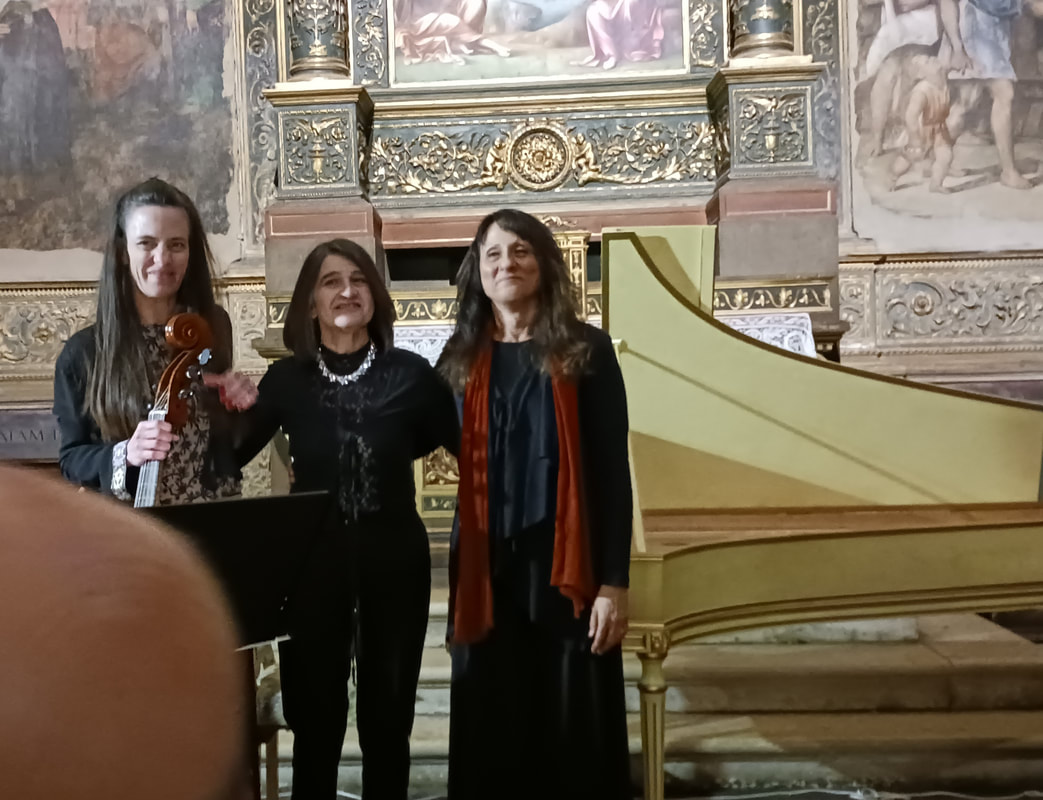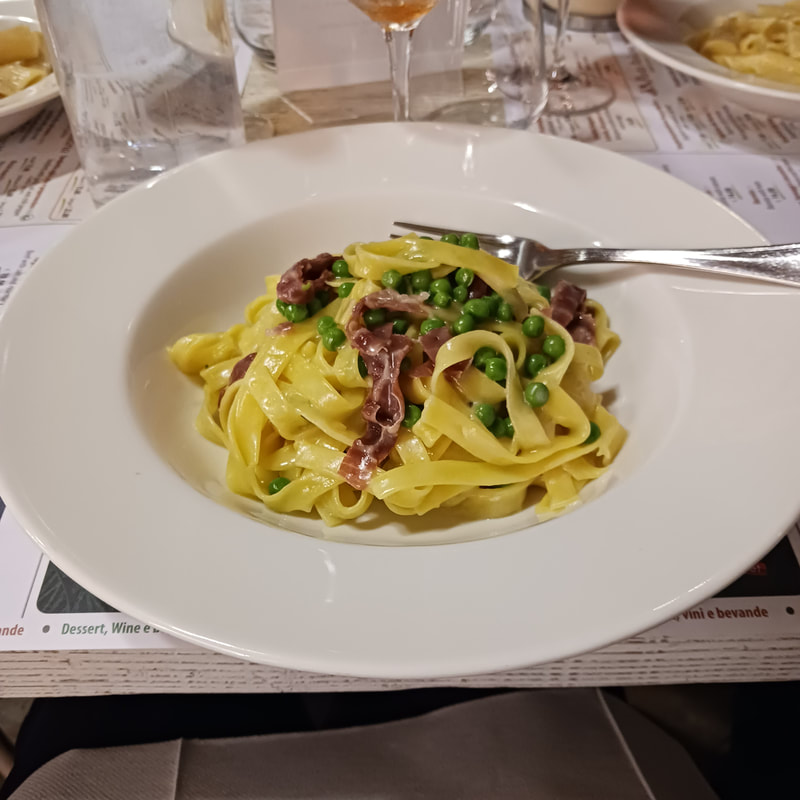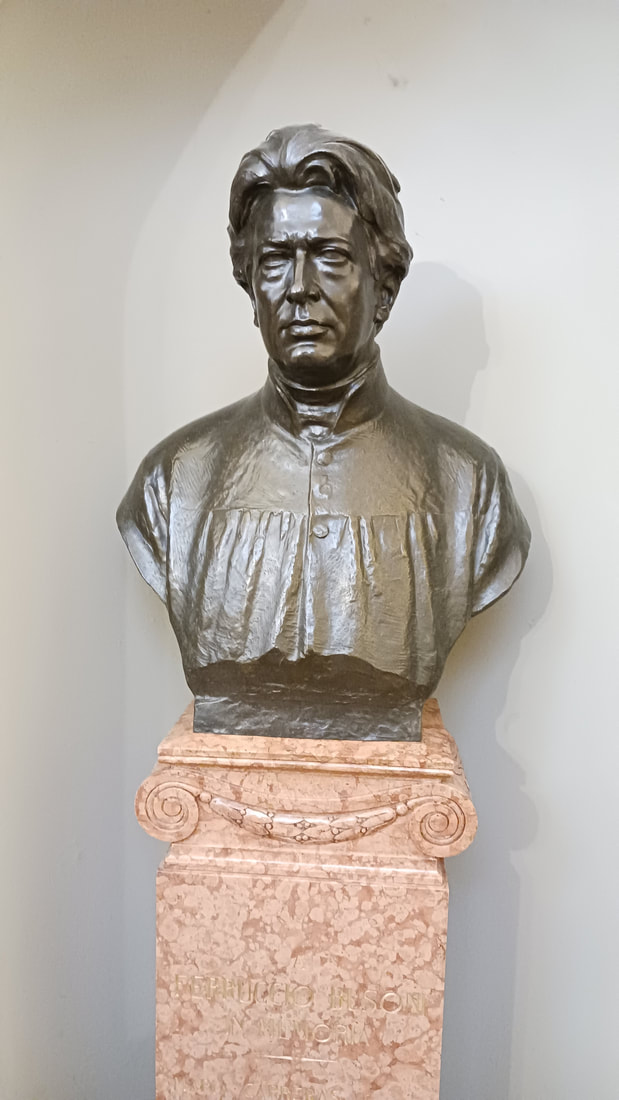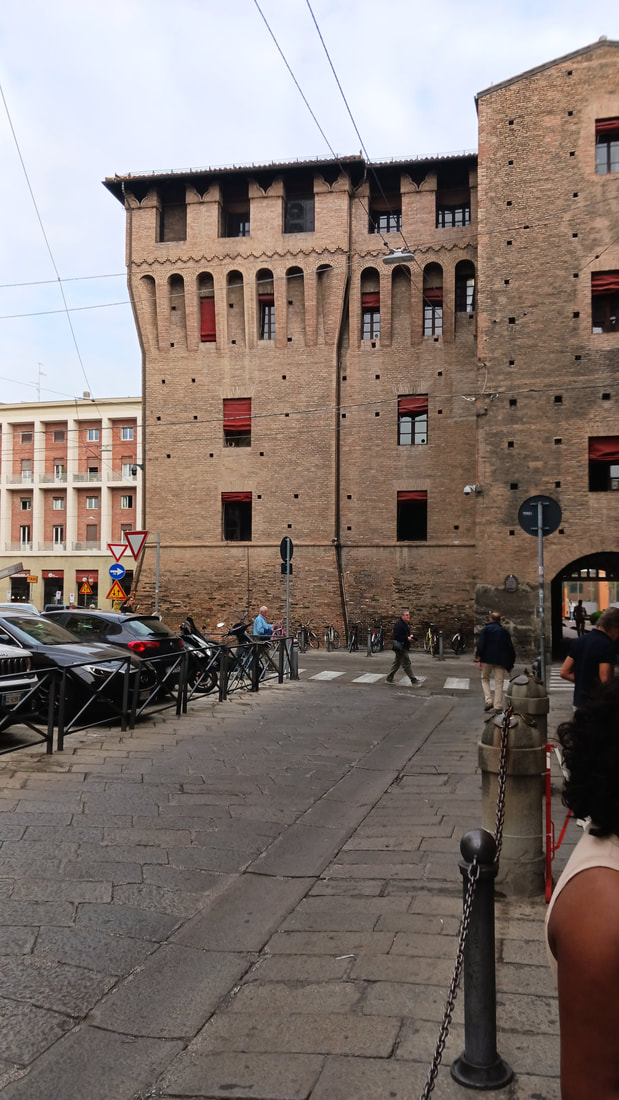|
Two unrelated pictures that perhaps don't say much about Bologna, but do say something about Bologna's effect on me.
I was walling back to San Donato from my Italian class in the city center, and I sat down in a park near our apartment. It was cool there, and the day was hot. A tiny flower landed on my arm, and I took a photo of it. The other picture was yesterday on our terrace in the evening. The strong sunlight passing through our wine glasses colored the table in an interesting way. We kept the wine glasses when the apartment was emptied out because we liked their rather dramatic design. That's all, nothing profound, just good, ordinary things.
0 Comments
Ok, so maybe you aren't impressed by walls. This wall abuts a garden that is not usually open to the public, but the day we saw it was special, and friends gave us passes so that we could go in and see a number of private gardens. It's a big wall!
I have been walking into the city center from San Donato every day for Italian classes which begin at 9:30 AM. I usually walk down Via Zamboni and through Piazza Verdi. I see the bell tower just as I reach the piazza, and it reminds me of how we loved the bells when we lived nearby in 2022.
As I mentioned in my last post, I was impressed by the Van Eyck piece for solo recorder. So, as one does in Bologna, I walked into the Ut Orpheus music shop today and asked whether the sheet music might be available. Ut Orpheus has a very strong selection of "early music," and they have the entire 143 pieces of van Eyck solo recorder music in three volumes. I bought volume 1, which has the piece "Amarilli mia Bella," based on the famous (at least to singers) aria of that name by Caccini.
Here's the thing: Jacob van Eyck (died in 1657) was a "chime master," an organist, and a flute player. He was also blind, and someone else wrote down the 143 pieces as he played them, or improvised them. van Eyck must have had quite a memory, and his scribe must have been pretty skillful, too. The 1984 edition of "Der Fluyten Lust-hof" by Amadeus Verlag has a lot of wonderful notes and song texts, since a lot of the pieces are based on popular songs. It's a treasure trove of lively tunes, some psalms, and a few fantasias. We arrived in Bologna on April 30, and we had a lot of shopping and other work to do on our mostly empty apartment.
But last night our friend Cinzia told us about a concert of 16/17th century music for recorder, viola da gamba, and harpsichord, and we went out to the Chiesa dei San Vitale e Agricola to hear it. We were very glad that we went. We sat perhaps 10 feet away from the performers, and they were all complete professionals, very well rehearsed and very expressive players. The program was divided into an English half and an Italian half. I was familiar with many of the English composers (Lawes, Purcell, Locke, Hume), but all of the Italians were new to me except Frescobaldi. The ensemble works were wonderful, but I liked the solo pieces best, oddly enough. Gamba - Pavan and Soldier's Galliard by Tobias Hume Recorder - Amarilli Mia Bella by Jacob van Eyck Harpsichord - La Monica by Bernardo Storace Below is a snapshot of the performers, not very flattering, From the left, Luciana Elizondo (gamba), Maria Luisa Baldassari (harpsichord), and Pamela Monkobodzky (recorder). With friends (and performers) Lynn Rice-See and David See, I produced a concert featuring my own composition Strade Bolognesi. Also on the program were Fantasy on Cenerentola by composer David See, and Idea for a Barcarolle by composer David Salvage. The concert was on the evening of November 6, 2022 in Sala Mozart of the Accademia Filarmonica in Bologna. It was a Bologna-themed concert, and the town sent a representative (Mattia Santori) who seemed enthusiastic about the event. It was a lovely concert; many of our Italian friends and acquaintances showed up, and many of us went out for pizza at the nearby Vasiliko restaurant. The pizza and the company were excellent. I had the concert recorded (audio) by my friend Pietro Giunta, and Giacomo Grassi videotaped it. The combined audio-video is now on YouTube (see below). Of course Bologna is known for its food, though oddly enough, I find myself less hungry here than at home in the US. We had a meal last night with Mark and Corinne, retired theater-educators that we met on the bus when we arrived in Milan. I ordered the dish below, tagliatelle with ham and peas, because it sounded simple. It was really good. The restaurant was F.G. Pasquini, just around the corner from Piazza Maggiore, and near the Comet store, where we shop for electronics.
We went to the Conservatorio Gian Battista Martini to offer posters about our concert, and we received a nice tour from a nice staff person. There were a number of busts in alcoves; I especially likes the one of Busoni, since I am a big fan of his Fantasia Contrappuntistica. The bust seems to have been created in his memory by a number of his students.
Yes, I realize that the titles of my last two posts contain the word 'very.' Boring old Charles!
I haven't taken any great, interesting pictures. See the one below, taken standing in front of the police station, where we were trying to register our presence in Bologna, like good, rule-obeying folks. Like most encounters with bureaucracy here, this occasion was not very satisfactory, but I'll spare you the details. We have been getting our programs and flyers printed and distributed to local music shops, the Conservatory, and the Accademia Filarmonica, where the concert will take place. Sorry to be so boring. Maybe I will try to climb up the outer walls of the Two Towers whilst blowing bubbles and singing Rossini. |
Nancy Rexford
|









 RSS Feed
RSS Feed